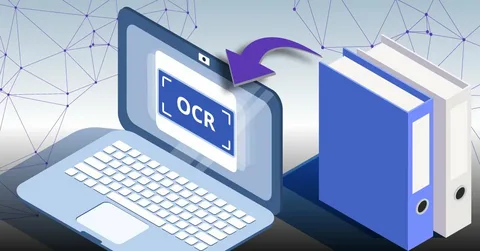ID scanning has become increasingly essential in a multitude of sectors, including finance, healthcare, security, and travel. As we navigate a digital landscape that demands swift verification processes, the role of technology in identity management has never been more crucial. At the forefront of this technological evolution is ID OCR (Optical Character Recognition), which empowers devices to swiftly and accurately extract information from identification documents, such as driver’s licenses, passports, and ID cards. By utilizing ID OCR technology, businesses can enhance operational efficiency and reduce human error, ensuring a more secure and reliable identification process.
The integration of ID scanning and ID OCR not only streamlines data entry but also elevates security protocols. Traditional manual verification methods can be time-consuming and prone to inaccuracies, making them less suitable for high-demand environments. In contrast, ID scanning paired with OCR technology automates the data extraction process, allowing organizations to validate identities promptly. For instance, in financial institutions, customer onboarding can be significantly expedited through automated ID scanning. This not only enhances the customer experience but also adheres to stringent anti-money laundering (AML) and know your customer (KYC) regulations, which are essential in the fight against fraud and financial crimes.
Moreover, ID scanning technology plays a pivotal role in verification processes across various industries. In the travel sector, for instance, airports have begun implementing ID scanning at check-in counters and security checkpoints. The use of automated kiosks equipped with ID OCR systems allows travelers to quickly verify their identities without long queues, improving the overall flow of passengers. This efficiency is not just beneficial for the passengers but also helps airport staff manage large crowds, particularly during peak travel seasons.
In addition to enhancing operational efficiency, ID OCR technology contributes significantly to enhancing compliance and reducing risks associated with identity fraud. Many organizations are investing heavily in advanced ID scanning solutions that feature biometric verification, two-factor authentication, and machine learning to detect anomalies in real time. This layered approach ensures that organizations can identify potential threats before they escalate, safeguarding sensitive data and maintaining trust with customers.
A notable trend in the evolution of ID scanning technology is the proliferation of mobile ID scanning applications. With the growing reliance on smartphones and mobile devices, organizations are now able to leverage this technology to allow users to scan their IDs directly from their devices. This capability not only puts the power of identity management in the hands of individuals but also adds a layer of convenience to everyday transactions. For example, retail stores are adopting mobile ID scanning for age verification, enabling customers to present digital IDs stored on their phones, thereby reducing the need for physical cards and making the process more streamlined.
As we look to the future, the continued advancement of ID scanning and OCR technologies holds great promise. The integration of artificial intelligence (AI) and machine learning is likely to enhance the accuracy and reliability of ID verification processes even further. Innovations such as predictive analytics could be utilized to identify patterns of fraudulent behavior, allowing organizations to proactively address potential risks. Additionally, as technology continues to evolve, businesses will have the opportunity to better customize their ID scanning solutions to meet the specific needs of their operations, enhancing both security and user experience.
In conclusion, ID scanning, particularly through the application of ID OCR technology, is transforming how we authenticate identities across various industries. From expediting customer onboarding to improving security measures, the benefits of integrating ID scanning solutions are significant and multifaceted. As technology continues to progress, organizations that prioritize the implementation of advanced ID scanning and verification systems are likely to remain ahead of the curve, ensuring they not only meet regulatory requirements but also respond to the evolving expectations of their customers in an increasingly digital world. The journey towards seamless and secure identity verification is just beginning, and the possibilities are limited only by the imagination and ingenuity of the industries that choose to embrace it.
